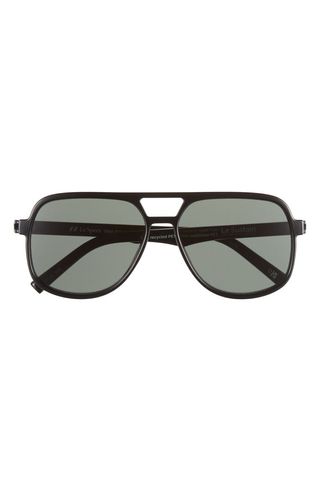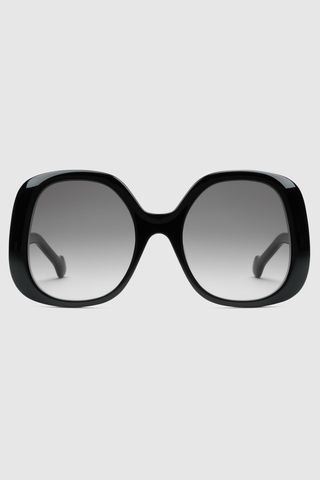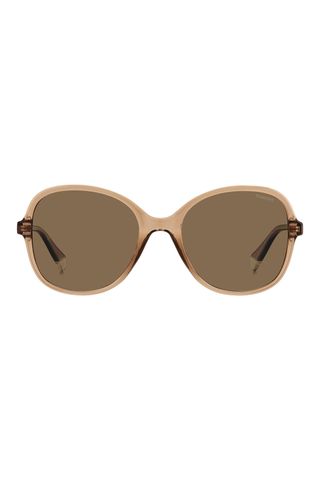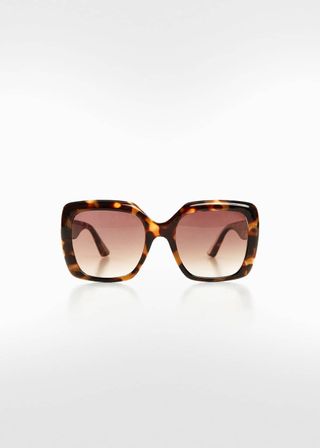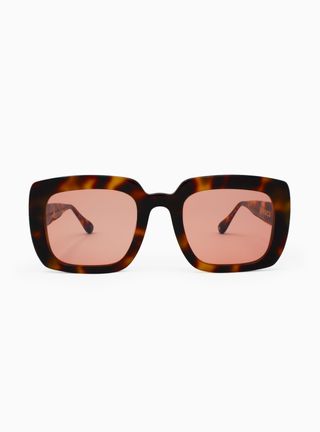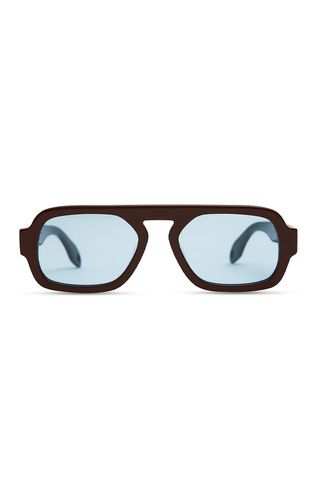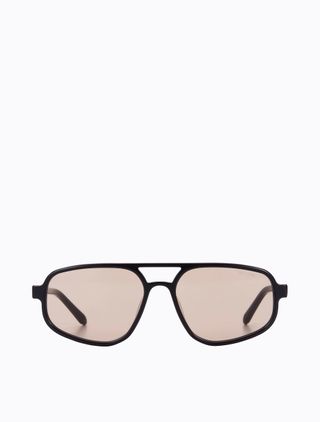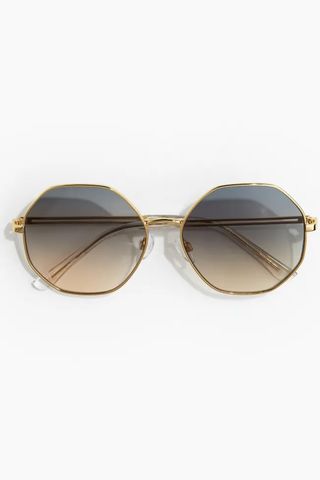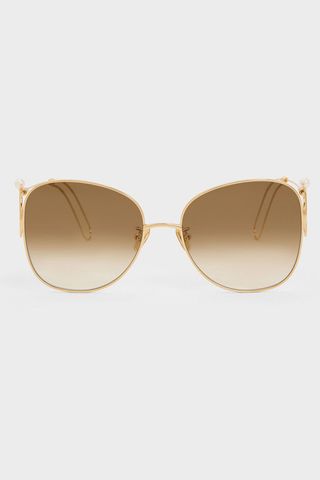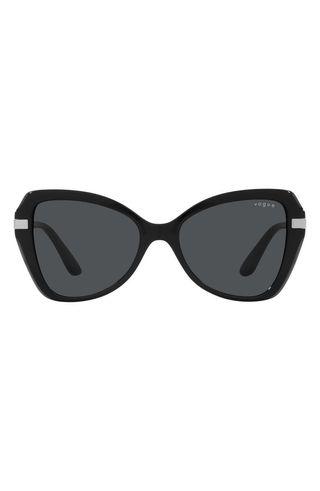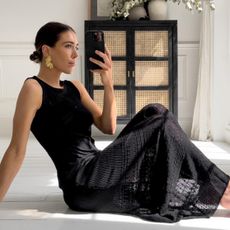The "Dated" Sunglasses Trend That Destined to Be Everywhere Again

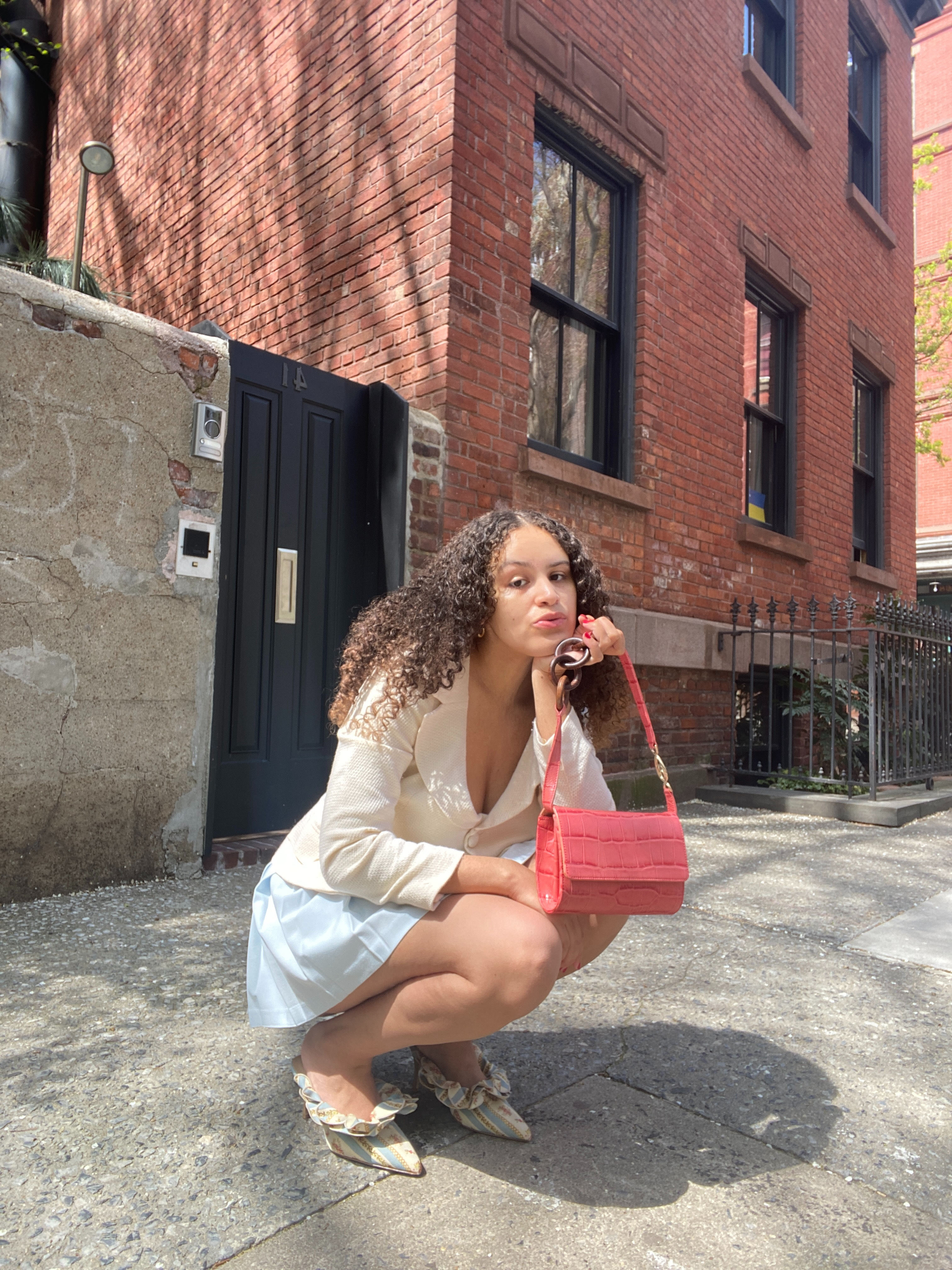
Anyone who’s followed fashion long enough is aware of one universal truth: nothing is truly “new.” Sure, there might be rising designers to put on your radar or even buzzy new items to buy, but on the whole, fashion is constantly pulling from the past. That’s no more visible than with runway trends, specifically the rise of one accessory: ‘70s-inspired sunglasses. Although seemingly small, fashion archivists can attest that sunglasses give us the greatest glimpse of the past. Each type of frame, even if it feels like a “fresh” trend, can be traced back to specific fashion eras because of its shape, size, and color shades. This is especially true with ’70s-inspired sunglasses because their boho-chic features are far more distinct compared to other eyewear styles. Thereby ensuring they’re easy to spot when they’re in our sights again. Spoiler alert: They are very much back.
It only takes a simple glance through S/S 24 and F/W 24 collections to conclude that these “dated” frames are making their debut into high fashion once more. However, if you’re unfamiliar with what type of sunglasses were popular during that period, nor the fashion history behind them, you’ll want to keep reading. We’re sharing our deep-dive from the archives to break down what eyewear was everywhere during the ‘70s, broken up by the six silhouettes that have recently popped up in runway collections. Based on their prevalence both in the past (and present), it’s only a matter of time before these sunglasses are spotted everywhere again. Luckily, we had the foresight to round up some of the best ’70s-inspired sunglasses at every price point to shop right now. Prepare to see the past from a new lens.
Aviator Frames
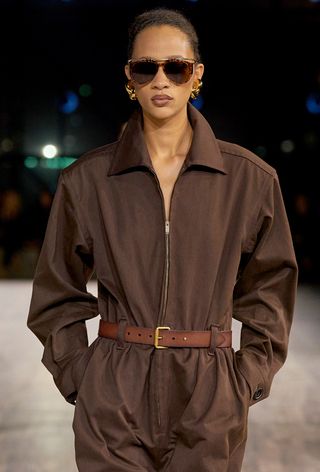
What's one frame synonymous with ’70s-inspired fashion? Aviators. As the name suggests, these shades were invented to protect pilots' eyesight during the ’30s but quickly soared to mass popularity in the late ’70s and early ’80s. In part, aviator sunglasses became trendy because of the eyewear's distinct shape; they're characterized by oversize tinted lenses with a double-bridge made from metal or plastic frame. Their rise can also be attributed to how the high-fashion crowd co-opted the shades in the '70s to make a fashion statement, making them more than something purely for functional purposes. That long history has continued as designers reinvented them on the runway, including most recently in Saint Laurent's spring show and Chloé's fall collection. Both gave the classic shades a contemporary twist by using hardware and tinted lenses to exaggerate the silhouette.
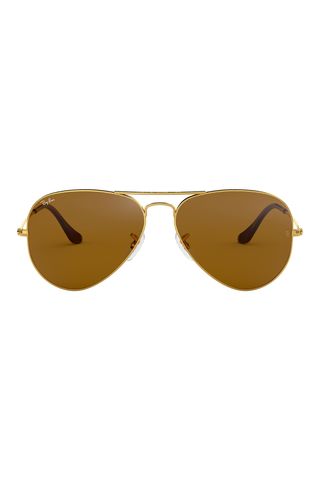
Long before aviators trended in the ’70s, Ray-Ban released its version of these sunglasses, making them the perfect investment for the long-term.
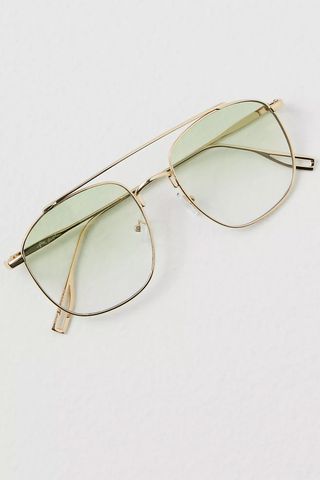
These come with five other lens colors in case green isn't your shade.
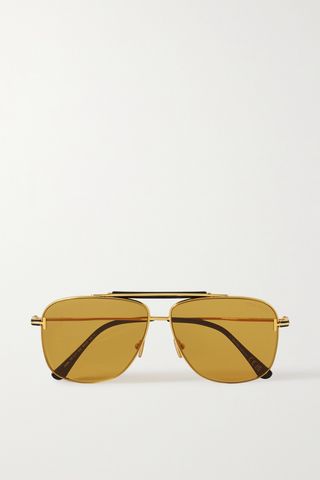
You'll feel like the main character in these shades.
Oversized Round Frames

Another defining element of ’70s-inspired sunglasses is that they tapped into the bohemian fashion movement of the previous decade, but often with more pronounced frames. A prime example would be the evolution of round sunglasses, which initially defined ’60s fashion because of the popularity of smaller, wire-frame pairs. But during the ’70s, round shapes became chunkier, so much so that they often covered half of the face, deviating from the daintier versions of the past. Ultimately, the more dramatic take on the frame shape not only caught the attention of stars during that era but also cemented the style as a continued source of inspiration for designers today. Recently, we've seen oversize round sunglasses be reinvented in the recent collections of luxury brands like Ulla Johnson and Isabel Marant.
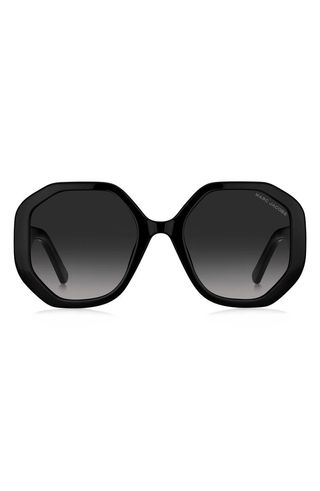
We'd style these with a silk scarf to really exude Old Hollywood glamour.
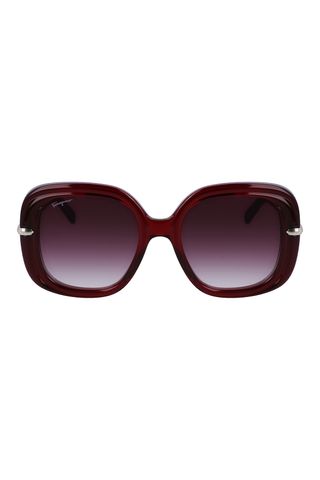
No need to choose between black or brown sunglasses when you can have burgundy-red ones.
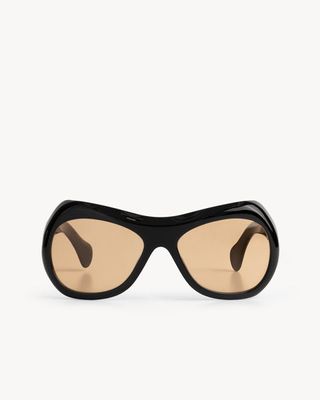
The chunkier aviator-esque frame on these feels particularly nostalgic.
Oversized Square Frames

As mentioned before, the sunglasses we saw trend throughout the ’70s were a continuation of the styles that dominated during the ’60s. Case in point? Oversize square sunglasses. These shades had all the same characteristics as round frames, but the main difference was that they had a more boxy shape that covered the entire face from bright lights. That made the frames the favored style among the most famous icons of that era, as the silhouette allowed them to dodge the flashing lights from the paparazzi while still looking fabulous.
While there's no denying that stars such as Jackie Kennedy and Diana Ross made these square sunglasses popular, fashion houses have played their part in making these frames forever relevant. That's no more apparent than how they've continued to be a part of fashion today, most notably in the spring and fall collections of luxury brands that exude ’70s glamour, such as Tom Ford and Gucci.
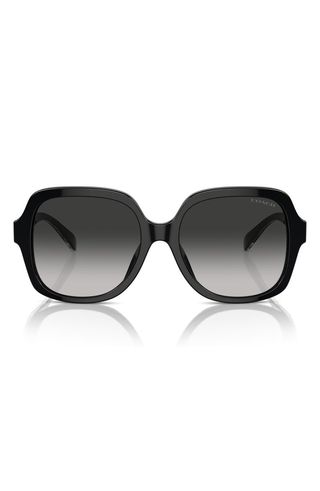
We could imagine a star wearing these to Studio 54 in the ’70s.
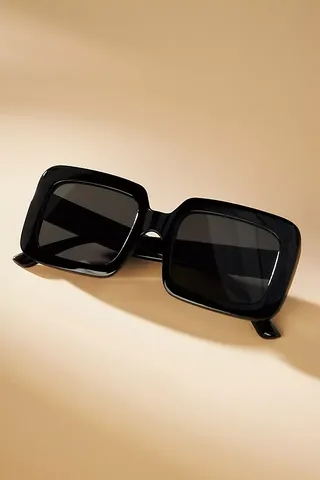
You don't have to spend a fortune to feel like you're famous. All you need is a pair of chunky square-frame glasses.
Tinted Lenses

Much of the iconography now associated with '70s fashion was closely related to the music industry, specifically the rise of disco and rock 'n' roll. Looking back, musical legends were responsible for many of the trends that we now consider quintessential to this era—such as tinted sunglasses. Technological advances in the ’70s led to the invention of colorful lenses, but they didn't fully catch on as a trend until they caught the eyes of legends such as Cher, Elton John, and Donna Summer. Inevitably, the prevalence of these shades on stylish musicians made tinted lenses some of the most coveted accessories throughout the decades, cementing them into the cultural zeitgeist. What keeps the buzz around tinted lenses alive isn't just their spot in the history books, but also their continued presence in the current collections of luxury houses such as Chanel and Versace.

These give a new meaning to the idiom "seeing the world through rose-tinted glasses."
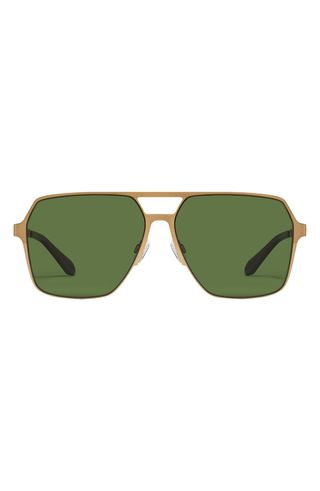
Why not tap into two ’70s-inspired trends with one pair of sunglasses?
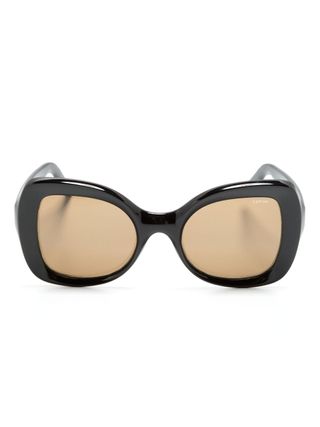
Rest assured, all eyes will be on you anytime you wear these.
Wire Frames
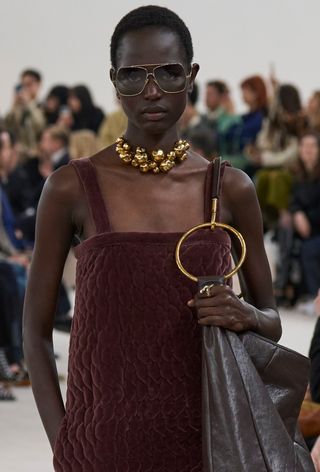
While many sunglasses trends throughout the ’70s featured larger frames overall, that doesn't mean there weren't sleeker options on the market. Wire frames were seen in both the dainty sunglasses of the ’60s and the exaggerated shapes of the ’70s. Compared to other styles made from chunkier plastic or tortoiseshell materials, these sunglasses were made from lightweight metal wire, which is less pronounced when worn on the face. But don't be fooled, as these wire-frame sunglasses still had some more theatrical elements that became synonymous with the trends during that time (like oversize shapes and colorful lenses). That delicate balance between maximalist and minimalist made these frames highly favored throughout the '70s. We'd argue that it's why they're bound to be popular again, although it does help that we've seen Chloé make them feel cool again in its fall 2024 collection.

Lightweight metal frames also come in the form of aviators, BTW.

Everything about these sunglasses exudes '70s energy—from the tinted square lenses to the wire metal frame—making them the perfect way to pay homage to this trend.
Butterfly Frames
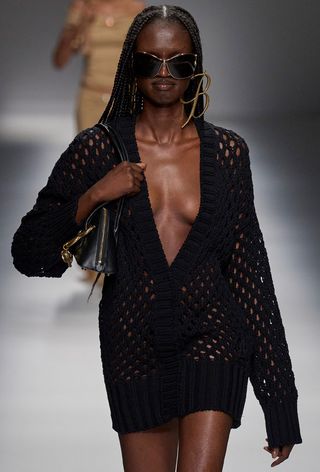
Mark our words: Butterfly sunglasses will take flight soon. We're not referring to sunglasses with lenses shaped like a butterfly but something much flier from the ’70s. Rather than relying upon anatomical lenses, designers at that time played with frame portions to create the visual illusion of a butterfly. That was achieved by having frames with a very thin bridge and oversize lenses that are round on the edges and pointed at the top to mimic the shape of a butterfly's wing.
While the unique shape of these sunglasses contributed to their popularity throughout the ’70s, it wasn't the only reason the style soared to new heights. Some of the most influential people, including activists Jane Fonda and Gloria Steinem, adopted the butterfly sunglasses trend during that era. They wore them so much that the shades inadvertently became synonymous with the style of the political movements for equality and freedom, which is fitting considering the motif from which they draw inspiration. While these shades embody groovy aesthetics, they've continued to undergo metamorphosis in the current age because fashion brands such as Blumarine and Tom Ford are re-creating them in their runway collections.

These sunglasses embody what this fashion era was all about: making bold statements and wearing even bigger sunglasses.

Jasmine Fox-Suliaman is a fashion editor living in New York City. What began as a hobby (blogging on Tumblr) transformed into a career dedicated to storytelling through various forms of digital media. She started her career at the print publication 303 Magazine, where she wrote stories, helped produce photo shoots, and planned Denver Fashion Week. After moving to Los Angeles, she worked as MyDomaine's social media editor until she was promoted to work across all of Clique's publications (MyDomaine, Byrdie, and Who What Wear) as the community manager. Over the past few years, Jasmine has worked on Who What Wear's editorial team, using her extensive background to champion rising BIPOC designers, weigh in on viral trends, and profile stars such as Janet Mock and Victoria Monét. She is especially interested in exploring how art, fashion, and pop culture intersect online and IRL.
-
 I'm a Fashion Editor—I Reach For These 2 Pieces When I Don't Know What to Wear
I'm a Fashion Editor—I Reach For These 2 Pieces When I Don't Know What to WearReady in 10 minutes or less.
By Jennifer Camp Forbes
-
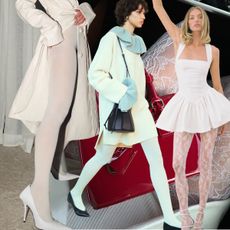 The Unexpected Spring Trend That's About to Be *Everywhere*
The Unexpected Spring Trend That's About to Be *Everywhere*From the runways to IG.
By Eliza Huber
-
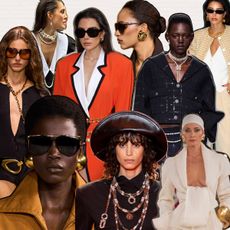 5 Elegant Jewelry Trends From the '80s That Are Everywhere Again
5 Elegant Jewelry Trends From the '80s That Are Everywhere AgainBlast from the past.
By Jasmine Fox-Suliaman
-
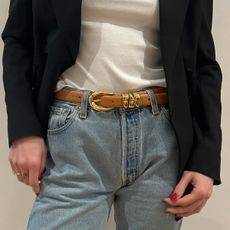 NGL, This $58 Madewell Belt Is Maybe My Best Buy of the Season So Far
NGL, This $58 Madewell Belt Is Maybe My Best Buy of the Season So FarI need one in every color.
By Eliza Huber
-
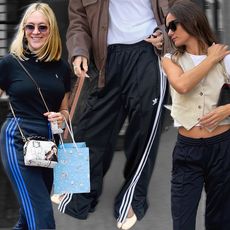 The Controversial Pant-and-Shoe Combo the Fashion Set Is Wearing Right Now
The Controversial Pant-and-Shoe Combo the Fashion Set Is Wearing Right NowOutfit inspo from Paris to NYC.
By Jennifer Camp Forbes
-
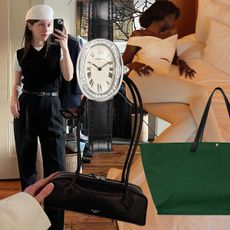 Spring's Most-Wanted Accessories, From Hats to Handbags
Spring's Most-Wanted Accessories, From Hats to HandbagsPeriod.
By Eliza Huber
-
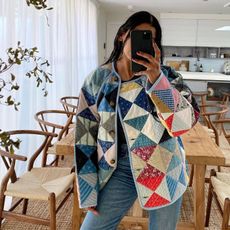 The Only 9 Jackets You Need for Spring, According to Fashion People
The Only 9 Jackets You Need for Spring, According to Fashion PeopleThere's something for everyone.
By Remy Farrell
-
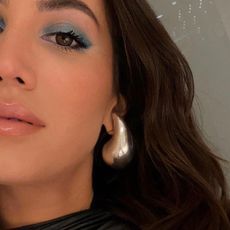 These Under-$30 Accessories From Amazon Will Make Your Outfits 10 Times Cooler
These Under-$30 Accessories From Amazon Will Make Your Outfits 10 Times CoolerIncluding those viral drop earrings.
By Ana Escalante

